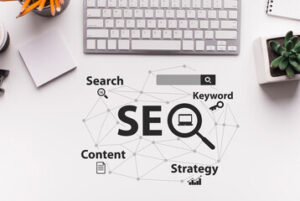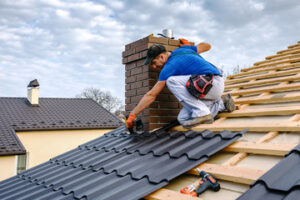Water Damage Restoration Salt Lake City involves a thorough assessment and inspection of affected areas. It starts with identifying the source of the water and ends with restoration and reconstruction work.

When dealing with contaminated water (sewage, floodwater), it’s important to call in an IICRC-certified professional immediately. This will help minimize damage and prevent health-related issues down the road.
The first step in water damage restoration is identifying the source of the problem. This is important because it helps determine what steps need to be taken to prevent further damage and clean up the existing water damage. It also helps ensure that any unsalvageable materials can be removed and the area is dried to appropriate standards so that it can be returned to use as soon as possible.
Depending on the situation, there are a variety of things that can be done to find the source of the water. For example, if there is visible water damage on the ceiling or walls, it can often be traced back to a nearby leak in a pipe or drain. Alternatively, if there is water collecting in specific spots, it could be due to an appliance such as a washing machine or refrigerator that is leaking or overflowing. In any case, it is best to call a professional for help locating and repairing the leak as soon as possible.
Another way to locate the source of a leak is by looking for damp areas or mold growth. Both of these are typically indicative of an undetected water leak. Mold in particular can be very dangerous if it is left to spread, and a musty smell is usually caused by excess moisture and lack of air circulation.
In order to test the humidity and moisture levels in an affected area, professionals will typically take a variety of measurements with tools like thermo-hygrometers and thermal imaging cameras, as well as industry-leading equipment such as LGR dehumidifiers and air movers. This is essential to ensuring that the area is dry enough for the rest of the property to be restored as quickly as possible.
Getting Rid of Standing Water
When it comes to water damage, time is of the essence. If left untreated, it can lead to a host of issues that are more difficult and expensive to fix.
The first step is to get rid of the standing water. This can be done by using towels or buckets to soak up the water, or a wet vacuum for larger areas. It is important to get the water out as soon as possible because the longer it sits, the more damage it can cause.
Once the water is removed, professional restoration services can start to work. They can use air movers and dehumidifiers to remove the excess moisture from the property. This will help prevent further damage and make the restoration process easier. They may also need to remove any materials that are damaged beyond repair, such as drywall or carpeting.
Another thing to consider is how you can prevent standing water in the future. For example, if you have puddles near your house, this can put pressure on the foundation and cause cracks or leaks. It can also create an environment for mold to grow, which can have serious health consequences. If you have a lot of standing water in your yard, consider re-grading the terrain so that it drains better.
Another way to prevent standing water is to make sure your gutters are working properly. If they are clogged, they will not be able to carry away the water and may overflow. You can also improve drainage by adding organic mulches to the soil. If you notice that your home has a problem with drainage, contact a professional landscaper who can help you re-grade the area and install proper drainage channels.
Removing Water-Damaged Materials
The next step in water damage restoration is removing any materials that have been negatively affected by the water. This includes anything from drywall to carpeting. It’s important to do this promptly because it can prevent further damage and help the material dry out.
When removing items, it’s important to wear protective equipment such as gloves and masks because some materials may harbor mold or bacteria. It’s also important to dispose of any contaminated materials according to local regulations.
It’s also important to remove any wood or metal that has been affected by the water damage. If these aren’t removed, they can lead to further damage and even structural damage to the property. It’s important to hire a professional for this since they have the right tools and knowledge to do it correctly.
After removing any damaged materials, the area is thoroughly cleaned and sanitized. This helps reduce potential health risks and ensures that the property is safe for occupants.
Lastly, it’s important to monitor the drying process and the humidity level of the area. If the humidity level rises, it could cause further damage to the property and increase the risk of mold growth. It’s also important to take steps to prevent further moisture from getting into the property, such as sealing the foundation and installing proper insulation.
Water damage restoration is a complicated process that requires the right skills and knowledge to complete properly. It’s important to act quickly to minimize the effects of water damage, such as fungus, mold, and other harmful substances that can affect occupants’ health and safety. For example, if wooden parts of a building aren’t restored properly after water damage, they may rot and cause further problems.
Drying Out the Area
When the water has been extracted and the affected areas are dry, a number of additional steps must be taken to ensure that the area is sanitized and all materials and structures are fully restored. In some cases, this can be done on a DIY basis; however, in more serious situations, it is advisable to call a professional to handle the task.
The first step is to turn off the water supply at the main valve. This will prevent further flooding and help minimize the damage to your property. It’s also important to wear safety gear when entering the affected areas, including face masks, gloves, and waterproof boots. Finally, it’s critical to carefully assess the extent of the water damage and take photos for documentation purposes.
Water damage experts have the knowledge and expertise to quickly restore homes and businesses back to pre-loss condition. They can perform a thorough assessment of the situation and create an effective restoration plan to ensure that all affected areas are thoroughly dried and restored.
They use advanced drying equipment to help speed up the process, including air movers, wet/dry vacuums, dehumidifiers, and moisture meters. They can also remove and replace carpets, flooring, drywall, and other items that have been damaged by the water. They can also disinfect and sanitize affected areas, ensuring that they’re free from mold and mildew.
They’ll also utilize specialized drying techniques for delicate items, such as marble and wood floors. This will help them to prevent warping and other structural issues. Finally, they’ll conduct regular assessments to monitor the progress of the drying process and ensure that all affected materials are restored to their pre-loss condition.
Cleaning Up
Water damage restoration involves remediation steps to help mitigate the impact of water intrusion and return impacted areas to pre-loss condition. These activities include assessment, extraction, drying and cleaning of materials and structures. Water remediation professionals are trained to identify the type of water, its source, and its severity, helping to minimize long-term damage and potential health risks. Water damage can stem from many sources, including burst pipes, clogged toilets, leaky dishwasher or washing machine lines, and natural disasters.
The first step in water damage restoration is to ensure the safety of those in the affected area by securing power to any electrical appliances and shutting off gas lines where applicable. This helps to prevent electrical shock or even explosions. Then, water-damaged materials should be removed as soon as possible, preferably within twenty-four hours or sooner. This helps minimize damage and saves money in the long run.
Once the standing water is removed and the area is dry, moisture measurements can be made with specialized tools like thermo-hygrometers and thermal imaging cameras. This helps to monitor and adjust humidity, airflow, and temperature levels within the impacted area until all materials are completely dry.
If the water is contaminated with sewage, silt, raw sewage, or chemical wastes, proper clean-up and disinfection must occur to protect your family’s health. This may involve bagging, tagging, and disposing of unusable items according to local regulations.
Once the affected areas are clean and safe, deodorization methods can be used to rid the area of unpleasant smells. Antimicrobial treatments can also be applied to prevent the growth of bacteria and other contaminants. Then, drywall that is unsalvageable will be removed, carpeting and carpet padding will be extracted, and the area will be cleaned and sanitized to prepare for reconstruction.


